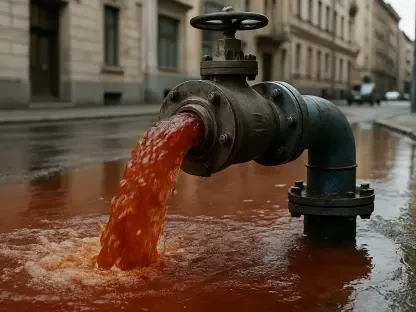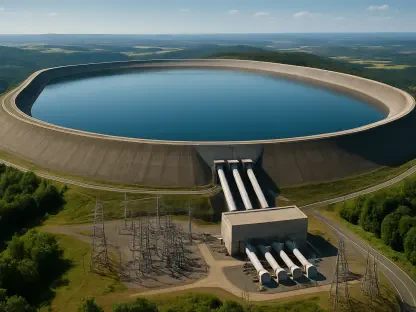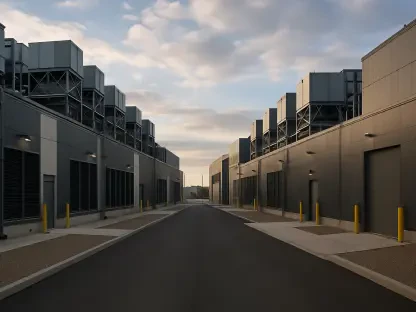Per- and polyfluoroalkyl substances (PFAS) have penetrated every corner of our environment, sparking serious concerns about their long-term impact on human health and the ecosystem. As these chemicals, often referred to as “forever chemicals,” exhibit an uncanny resistance to degradation, they accumulate over time, raising the stakes in our struggle to contain them. With public awareness growing over the grave health risks and the environmental toll, the clamor for effective PFAS filtration solutions has surged like never before. This article delves into the complex interplay of factors driving this burgeoning demand, encompassing market dynamics, technological advancements, regulatory measures, and regional trends shaping the future of PFAS filtration.
Health and Environmental Concerns
PFAS compounds have earned their infamous nickname “forever chemicals” because of their stubborn resistance to breakdown, resulting in their relentless accumulation in the environment and our bodies. Scientific studies have increasingly linked PFAS exposure to a range of alarming health conditions, such as thyroid disease, liver damage, fertility problems, and even various types of cancer. This growing body of evidence has heightened public concern, prompting a strong demand for robust filtration solutions capable of removing PFAS from water and soil effectively.
The environmental ramifications of PFAS contamination present an equally dire situation. These persistent chemicals have been found in water sources, soil, and even the air, threatening both terrestrial and aquatic ecosystems. The persistence of PFAS means that once an area is contaminated, it becomes exceedingly difficult to remediate, requiring extensive and often costly measures. As a result, there is a mounting focus on preventive strategies and the development of sophisticated filtration technologies aimed at mitigating the spread of PFAS pollution before it exacerbates further.
Regulatory Pressures
Globally, governments and environmental regulatory agencies have taken note of the perils posed by PFAS contamination, leading to the implementation of stringent rules to combat this crisis. These regulations target the reduction of PFAS levels in drinking water, industrial discharges, and other environmental media. For example, the U.S. Environmental Protection Agency (EPA) has set advisory levels for specific PFAS compounds in drinking water, urging municipalities and industries to adopt effective filtration systems to comply with these standards.
In Europe, the European Chemicals Agency (ECHA) has gone a step further, proposing comprehensive restrictions on the use of PFAS in various products and applications. This regulatory push is twofold: it aims not just at safeguarding public health but also at ensuring adherence to stringent environmental standards. As a consequence, the demand for PFAS filtration solutions is expected to see considerable growth in the near future, driven by the necessity to meet these rigorous regulatory demands.
Technological Advancements
The rise in demand for PFAS filtration has spurred significant technological advancements in filtration methods, helping to usher in a new era of water and soil purification. Innovations such as activated carbon, reverse osmosis, and ion-exchange resins have garnered attention for their efficacy in removing PFAS compounds from water. Each of these technologies offers unique strengths, catering to diverse needs and applications, and contributing to the overall growth of the PFAS filtration market.
Among these solutions, activated carbon is widely favored for its adsorptive properties, making it a staple in municipal water treatment plants. Reverse osmosis stands out for its ability to provide high-level filtration by forcing water through semi-permeable membranes, capturing even the smallest PFAS particles. Ion-exchange resins, meanwhile, are gaining traction for their selective removal capabilities, providing a more targeted approach that can be customized to address specific PFAS compounds. Together, these technologies represent a powerful arsenal in the fight against PFAS contamination.
Market Segmentation and Growth
The PFAS filtration market is characterized by distinct segments based on technology, place of treatment, and end-use applications. Each segment plays a pivotal role in shaping the market’s trajectory and addressing the varied needs arising from PFAS contamination. In 2024, the water treatment system segment claimed the largest market share, largely driven by the widespread necessity for clean and safe drinking water. As industries continue to seek out more effective and economical methods to tackle PFAS contamination, the water treatment chemicals and other solutions segment is expected to witness rapid growth throughout the forecast period.
When considering the place of treatment, the in-situ segment emerged as the dominant force in 2024, celebrated for its cost-effectiveness and flexibility. In-situ treatment involves deploying filtration technologies directly at the contamination site, thereby eliminating the need for substantial infrastructure and transportation logistics. This method is particularly advantageous for addressing contamination in remote or otherwise challenging locations, offering a practical solution that reduces overhead costs while ensuring effective remediation.
The end-use market is bifurcated into municipal and industrial applications, each reflecting unique drivers and growth patterns. Municipal applications represented the largest segment in 2024, underscored by heightened awareness of health risks and stringent regulatory requirements. However, the industrial segment is poised for significant expansion, fueled by the imperative to address PFAS contamination across various sectors, including manufacturing, chemicals, and electronics. This industrial demand highlights the multifaceted nature of PFAS pollution and the need for tailored filtration solutions across diverse applications.
Regional Analysis
The demand for PFAS filtration solutions exhibits substantial regional variation, driven by factors such as industrialization levels, urbanization rates, and differing regulatory frameworks. In 2024, the Asia Pacific region commanded the largest market share, propelled by rapid industrial growth, significant urban expansion, and a host of environmental initiatives aimed at combating PFAS contamination. Countries like China and India are pouring significant investments into enhancing water treatment infrastructure as they grapple with pressing environmental concerns.
Conversely, North America is anticipated to experience the highest compound annual growth rate (CAGR) during the forecast period. This rapid growth is underpinned by substantial government investments and heightened PFAS contamination awareness in specific areas. The U.S. and Canada are at the forefront of implementing stringent regulations and investing in cutting-edge filtration technologies to safeguard public health and mitigate environmental risks. These efforts reflect a robust, region-specific approach to tackling the PFAS crisis and signal a burgeoning market for advanced filtration solutions.
Artificial Intelligence and Technological Integration
The integration of artificial intelligence (AI) and other technological innovations is poised to drive further advancements in PFAS filtration. AI-driven analytics can optimize filtration processes, predict contamination patterns, and enhance the precision of filtration systems. These advancements promise to improve the efficiency and effectiveness of PFAS removal, offering new solutions to address the pressing challenges posed by these persistent chemicals. Through continued investment in AI and advanced filtration techniques, we can better protect human health and the environment from the threats of PFAS contamination.









